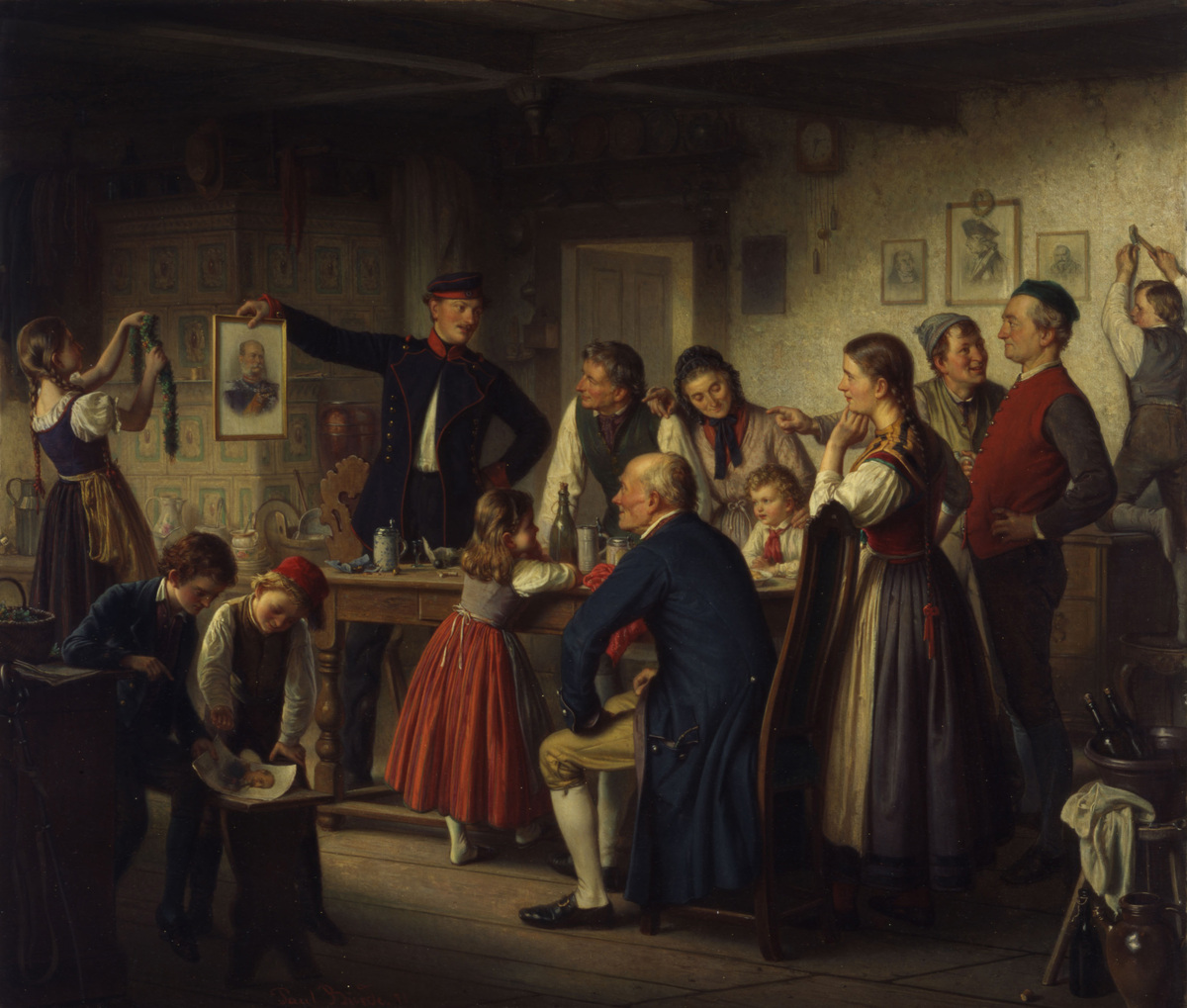Source

Source: Paul Bürde, Die Huldigung Kaiser Wilhelms I. [Homage to Kaiser Wilhelm I]. Painting, oil on canvas (1871). Deutsches Historisches Museum, Berlin, Inventar-Nr. Gm 96/31.
The straight-line version of history propagated by scholars like Heinrich von Treitschke in the 1860s and 1870s becomes tangible in this painting by the little-known artist Paul Bürde (1819–1874). According to this Borussian teleology, Prussia was preordained to realize Germany’s “destiny.” Thus, we see a Prussian uhlan holding up a portrait of Wilhelm I before a gathering of three generations of Germans in a rural household. Everyone in the scene draws pride from Prussia’s recent military victories and German unification. At the bottom left, two boys are rolling up a portrait of the archenemy, French Emperor Napoleon III (1808–1873), while a girl prepares to hang a garland on the portrait of Kaiser Wilhelm I. In the background at the right, another boy pounds a nail into the wall, thereby showing where the portrait will be hung in a moment. The message is clear: the emperor will assume his rightful “place” at the end of a historical saga that began with Martin Luther and continued through Frederick the Great and the hero of Waterloo, Field Marshall von Blücher. Just as Luther was transformed into the personification of the German spirit when he denounced the Catholic hierarchy and Rome, Wilhelm has been transformed from Prussian king to German emperor by virtue of his victory over the meddlesome adventurer Napoleon III. Thus, it is Prussia’s pantheon of heroes—and not the German people—who have brought the nation to its full and proper realization in the new empire.

Source: Paul Bürde, Die Huldigung Kaiser Wilhelms I. [Homage to Kaiser Wilhelm I]. Painting, oil on canvas (1871). Deutsches Historisches Museum, Berlin, Inventar-Nr. Gm 96/31.
© Deutsches Historisches Museum, Berlin